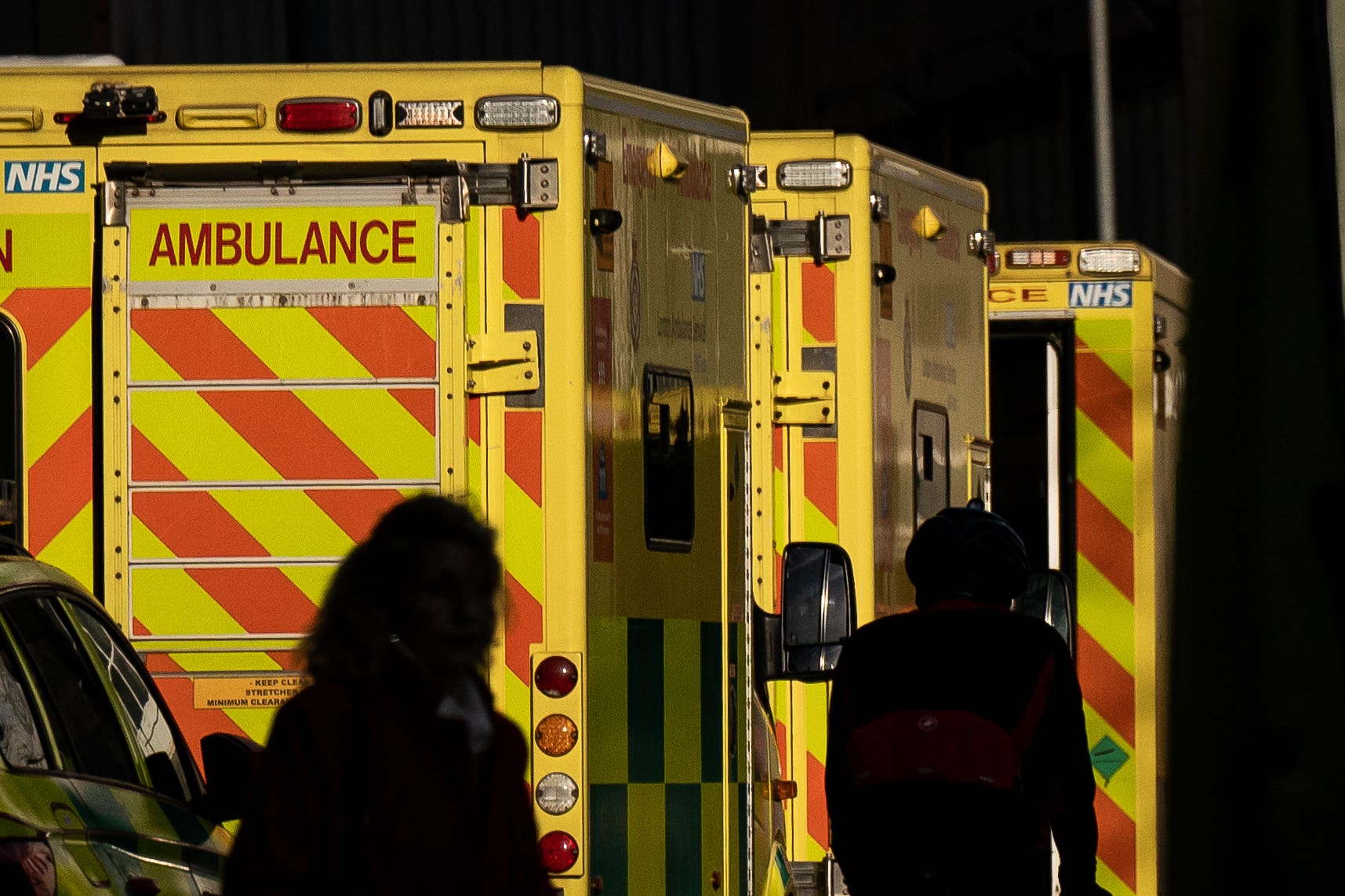Sharp rise in excess deaths at end of 2022 as flu and cold snap took hold
Deaths in private homes were 37% higher than usual in the week to 30 December

Your support helps us to tell the story
From reproductive rights to climate change to Big Tech, The Independent is on the ground when the story is developing. Whether it's investigating the financials of Elon Musk's pro-Trump PAC or producing our latest documentary, 'The A Word', which shines a light on the American women fighting for reproductive rights, we know how important it is to parse out the facts from the messaging.
At such a critical moment in US history, we need reporters on the ground. Your donation allows us to keep sending journalists to speak to both sides of the story.
The Independent is trusted by Americans across the entire political spectrum. And unlike many other quality news outlets, we choose not to lock Americans out of our reporting and analysis with paywalls. We believe quality journalism should be available to everyone, paid for by those who can afford it.
Your support makes all the difference.Excess deaths in England and Wales jumped sharply at the end of 2022, with a mixture of flu, cold weather and access to emergency care likely to have contributed to a spike in mortality, new figures show.
The number of registered deaths was 20 per cent above average in the week ending 30 December and 21 per cent above average in the week to 23 December, according to the Office for National Statistics (ONS).
These are some of the highest levels recorded across 2022 – a year that saw above-average deaths almost continuously since the summer.
Health experts have warned against “simplistic” explanations for what is causing the rise in excess mortality, saying the picture is “complex” and needs further investigation.
Levels remain particularly high among people dying at home, where deaths were 37 per cent above average in the week to 30 December, compared with 20 per cent higher for care homes and 15 per cent higher for hospitals.
Of the 684 excess deaths in private homes in the last week of 2022, only 26 (4 per cent) involved Covid-19.
By contrast, deaths involving flu and pneumonia have “increased in recent weeks”, the ONS said, accounting for 22 per cent of all the deaths registered in England and Wales in the week to 30 December, up from 17 per cent the previous week and 15 per cent at the start of December.
Excess deaths, or extra deaths, are the number of deaths that are above the five-year average for the specific period.
Dr Veena Raleigh, senior fellow at the health charity The King’s Fund, said there had been a “trend of as-yet-unexplained high numbers of deaths throughout the second half of 2022”, with “many factors” likely to have contributed to the rise, besides flu and Covid-19.
“The numbers of deaths will be affected by a range of other factors including the cold weather spell in December, the availability of services including emergency care, and the continued effects of some patients’ healthcare needs going unmet during the pandemic,” she added.
“As the picture is complex, simplistic explanations about the causes of rising excess deaths since summer 2022, and in particular about the latest data, are unhelpful.
“Detailed data analyses by the ONS, Office for Health Improvement and Disparities, NHS England and other agencies are needed to establish what’s driving the current increase.”
Deaths in England and Wales were mostly below average during the early months of 2022, but started to run higher than usual in April and have been well above average in almost every week since June.
There have been 25,105 excess deaths since the start of August, of which more than half (13,862, or 55 per cent) have occurred in private homes.
Dr Martin Carkett, of the Future of Britain project at the Tony Blair Institute, said many of the 25,000 excess deaths since the summer “could have been avoided”, adding: “This is the human cost of government inaction in the face of an entirely foreseeable crisis.
“We set out 12 recommendations for the government to take, to focus leadership, minimise demand on the service, improve patient flow and efficiency and maximise capacity. And we called on the then-PM to set up a winter crisis task force and confirm additional funding early to relieve pressure on hospitals.
“While the government have taken forward some of these proposals, there is more that must be done now if we’re going to turn the tide, including extending free Covid-19 and flu vaccination to all over-18s.”
Total deaths in England and Wales were above average in 2020 and 2021, but in both years Covid-19 was the main cause.
In 2022 coronavirus is likely to have played a smaller role in causing excess deaths, alongside factors such as flu, the weather – including the summer heatwave – pressures on the NHS and access to medical services.
Sir David Spiegelhalter, emeritus professor of statistics at the University of Cambridge, said the large jump in excess deaths before Christmas not linked to Covid-19 “would reflect deaths occurring in mid-December, when there was a very cold spell”.
He added: “Presumably much of this increase is due to the cold, although the increasing problems in access to NHS care are likely to have contributed, although it is not possible to say by how much.”
Data for excess deaths across the whole of the UK in 2022 is not yet available, with figures for Northern Ireland currently running up to 23 December.